Abstract
Careful examination of effects of solvent substitution on excitable membranes offers the theoretical possibility of identifying those aspects of the gating and translocation processes which are associated with significant changes in solvent order. Such information can then be used to develop or modify moire detailed models. We have examined the effects of heavy water substitution in Cs+-and K+-dialyzed Myxicola giant axons. At temperatures of 4-6 degrees C, the rates of Na+, K+, and Na+ inactivation during a maintained depolarization were all showed by approximately 50% in the presence of D2O. In contrast, the effects of solvent substitution on the time-course of prepulse inactivation and reactivation were much larger, with slowing averaging 160%. Studies at higher temperatures yielded Q10's for Na+ activation and K+ activation which were essentially comparable (0.72) and slightly but significantly smaller than that for inactivation during a maintained depolarization (0.84). In contrast, the Q10 for the D2O effect on prepulse inactivation was approximately 0.48. Heavy water substitution decrease Gk to a significantly greater extent than G(Na), while the decrease in the conductance of the Na+ channel caused by D2O was independent of whether the current-carrying species was Na+ or Li+. Sodium channel selectivity to the alkali metal cations and NH4+ was not changed by D2O substitution.
Full text
PDF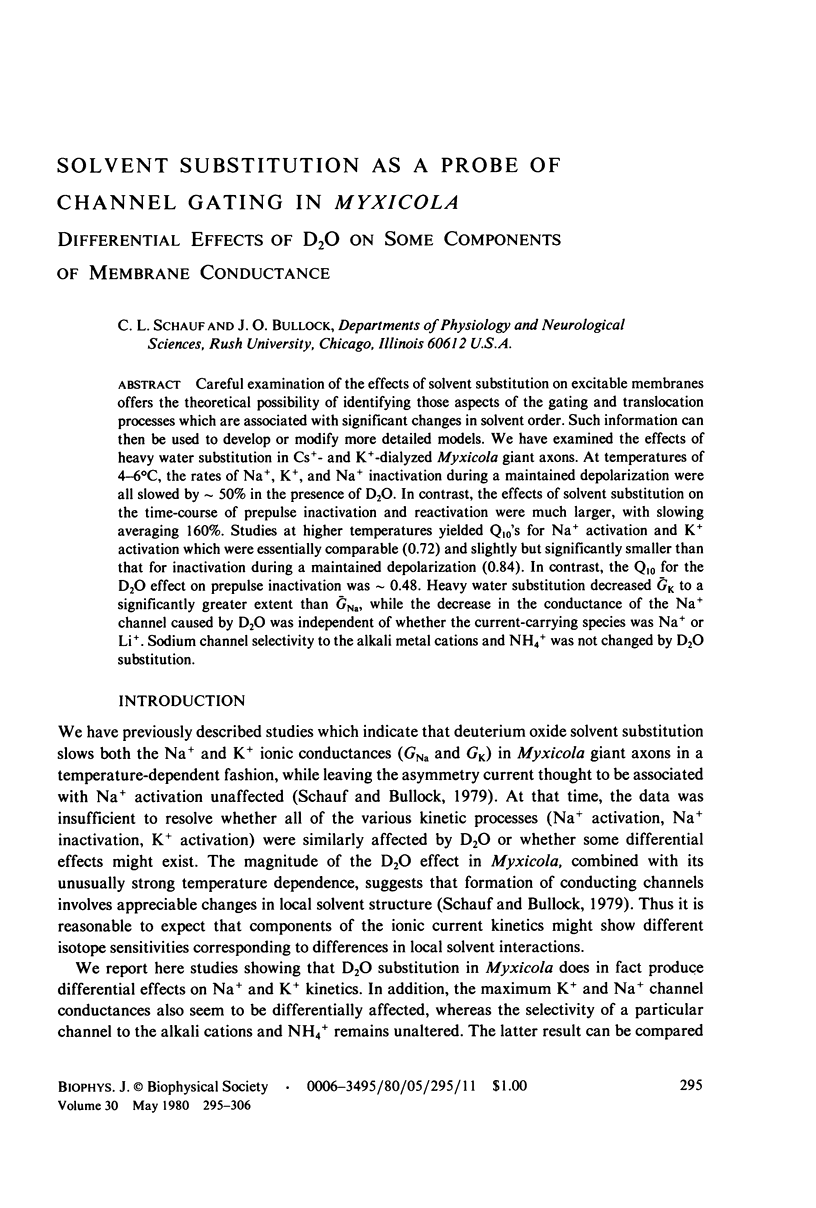
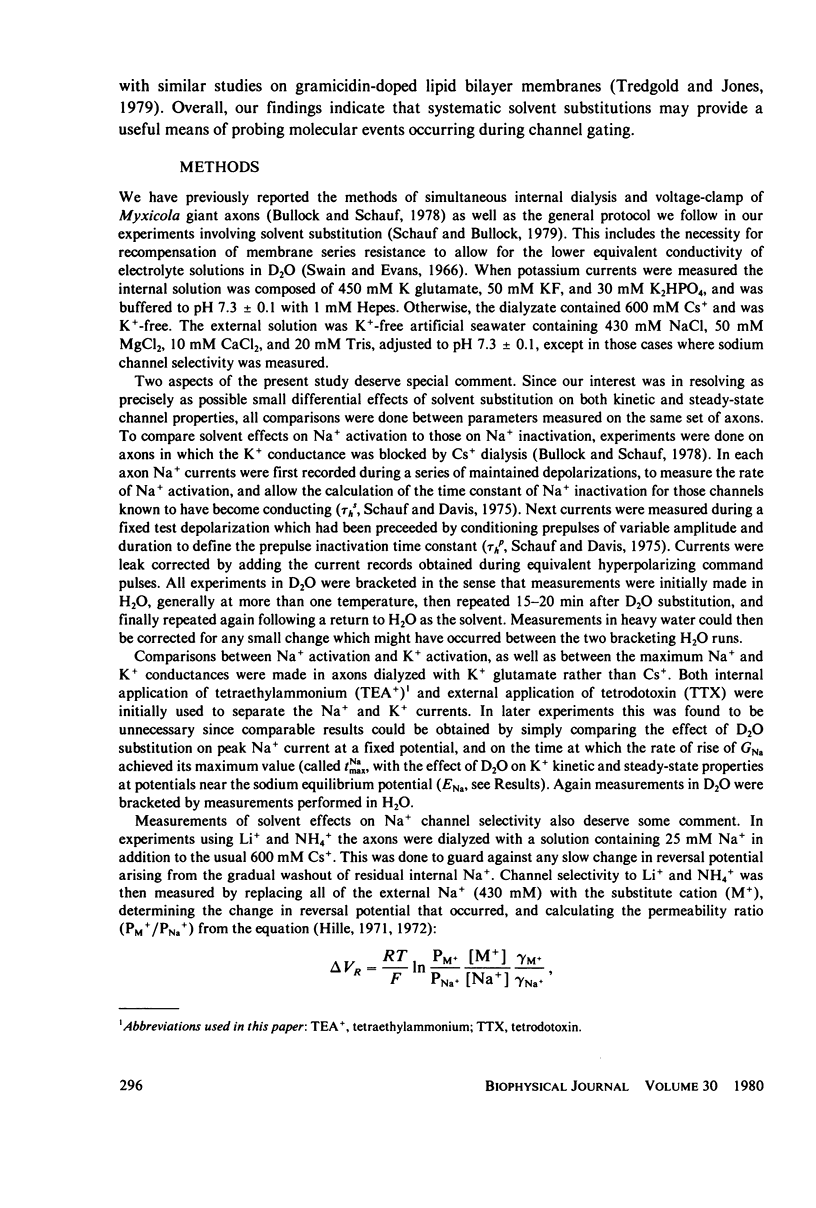

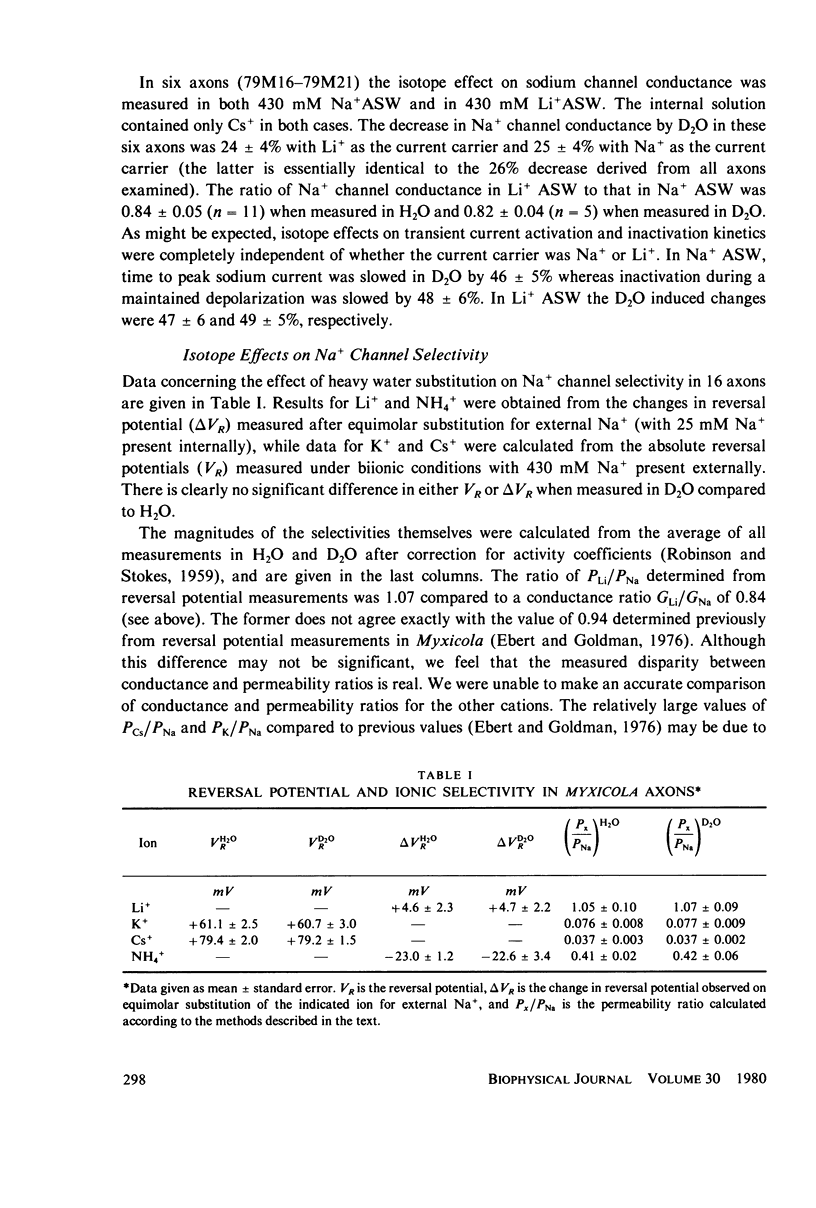
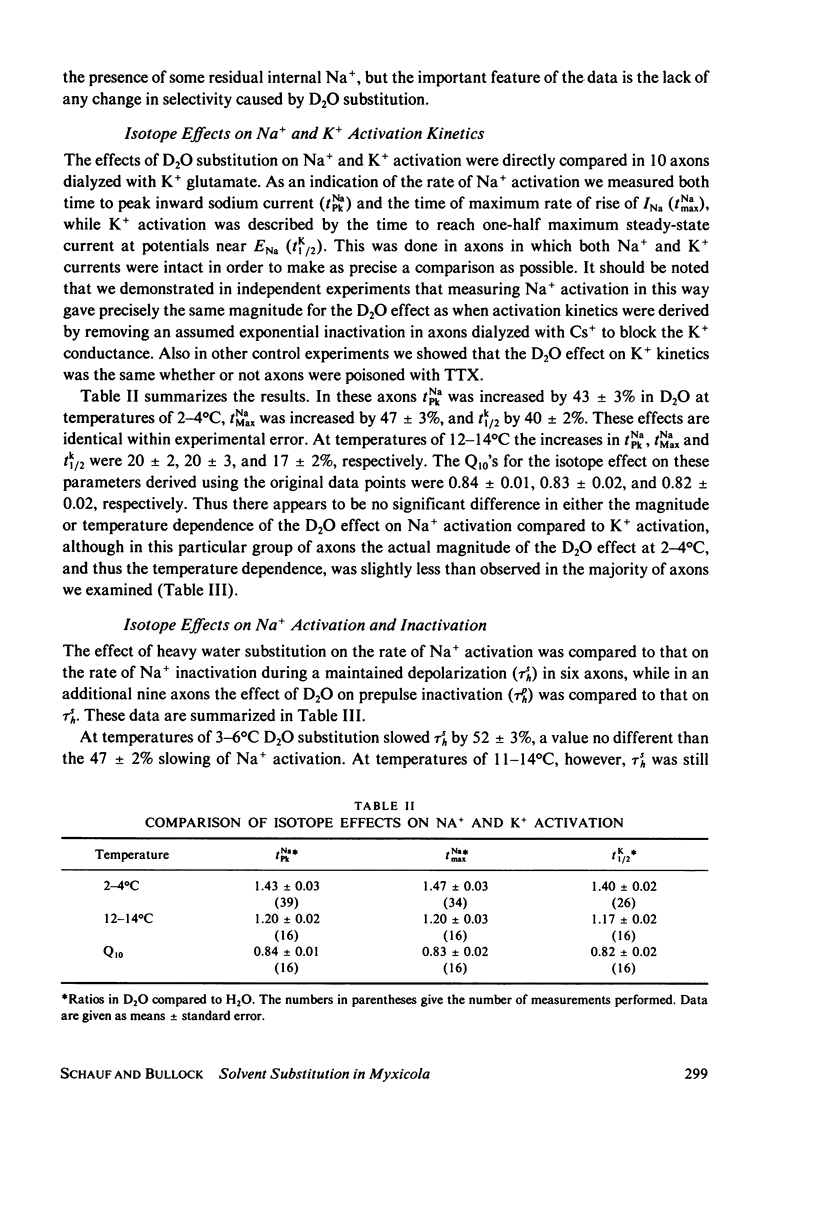
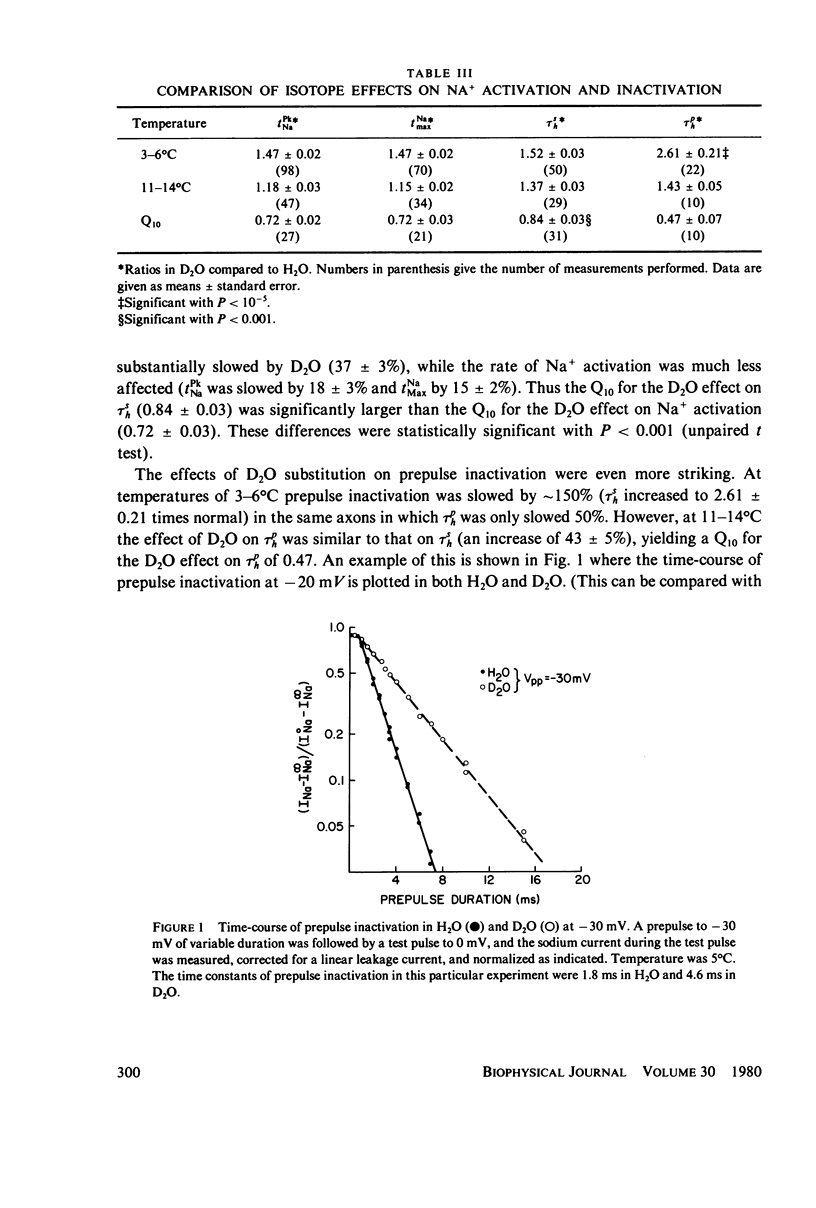
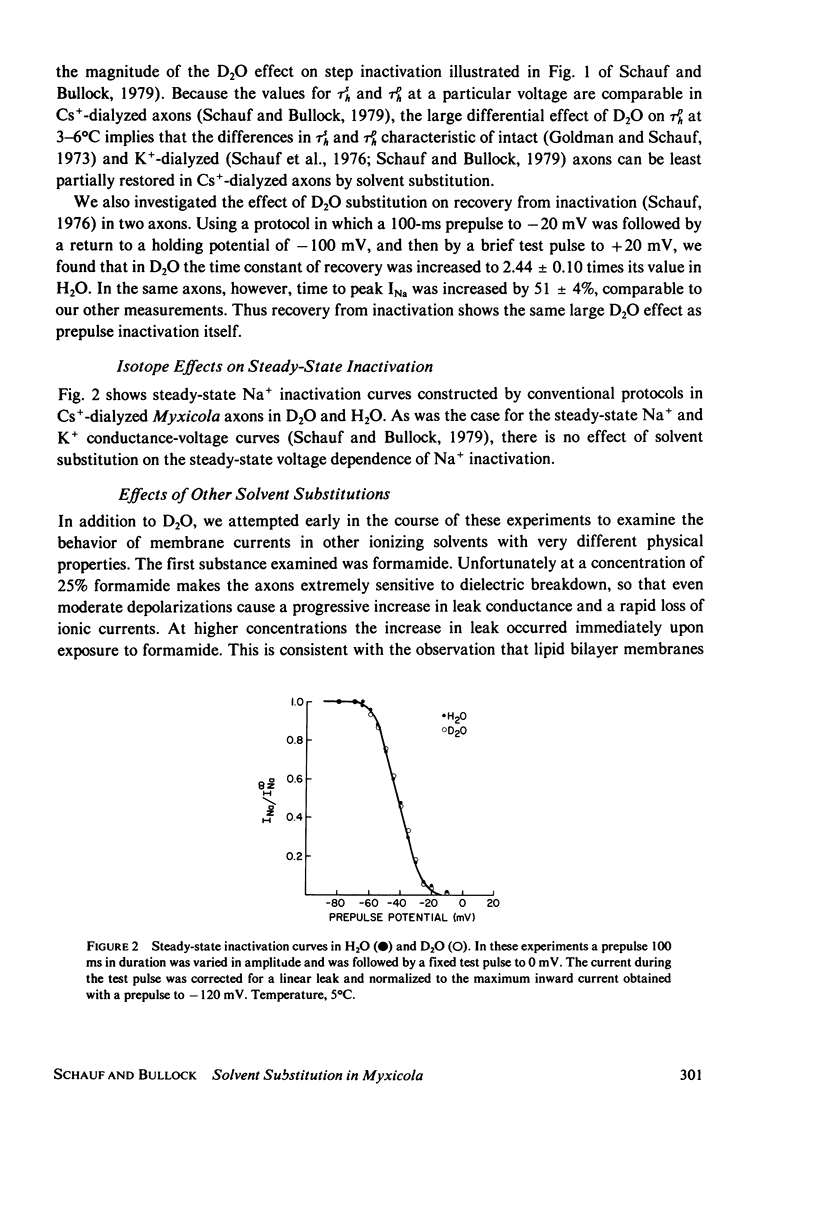
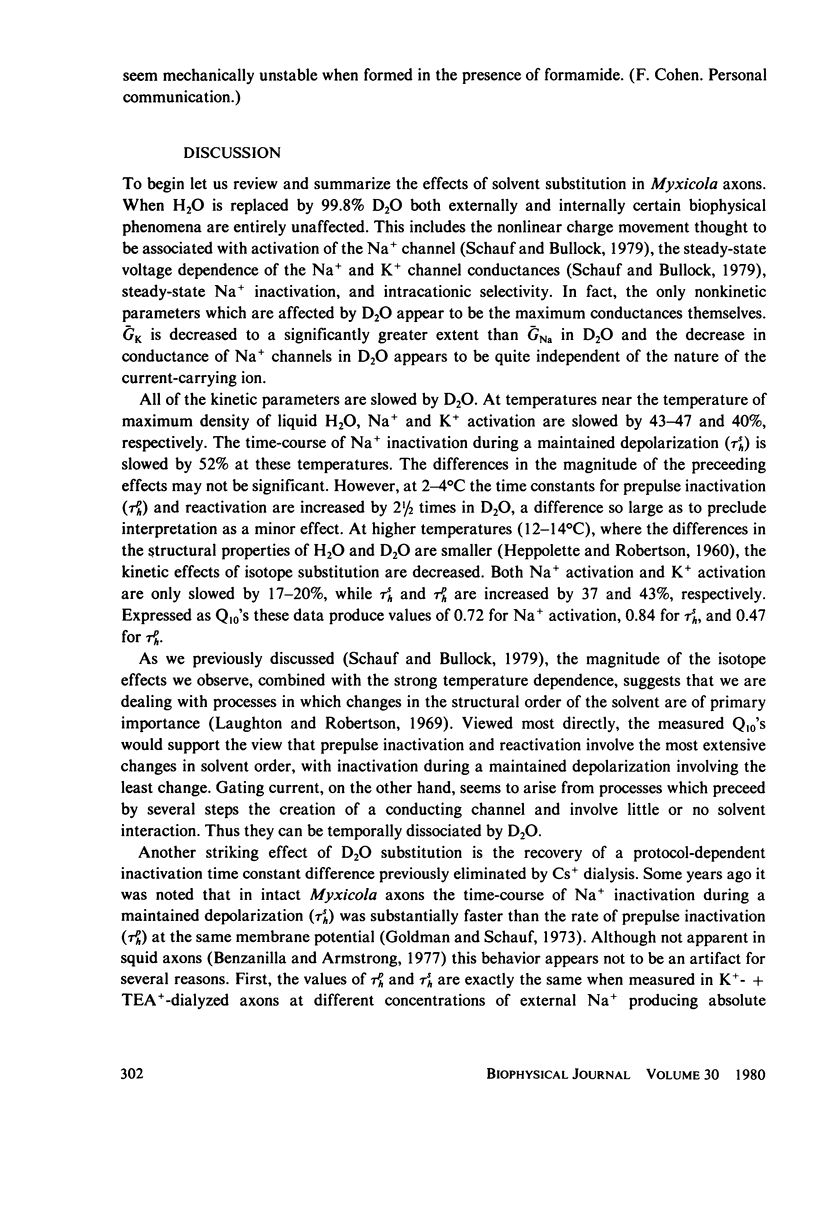
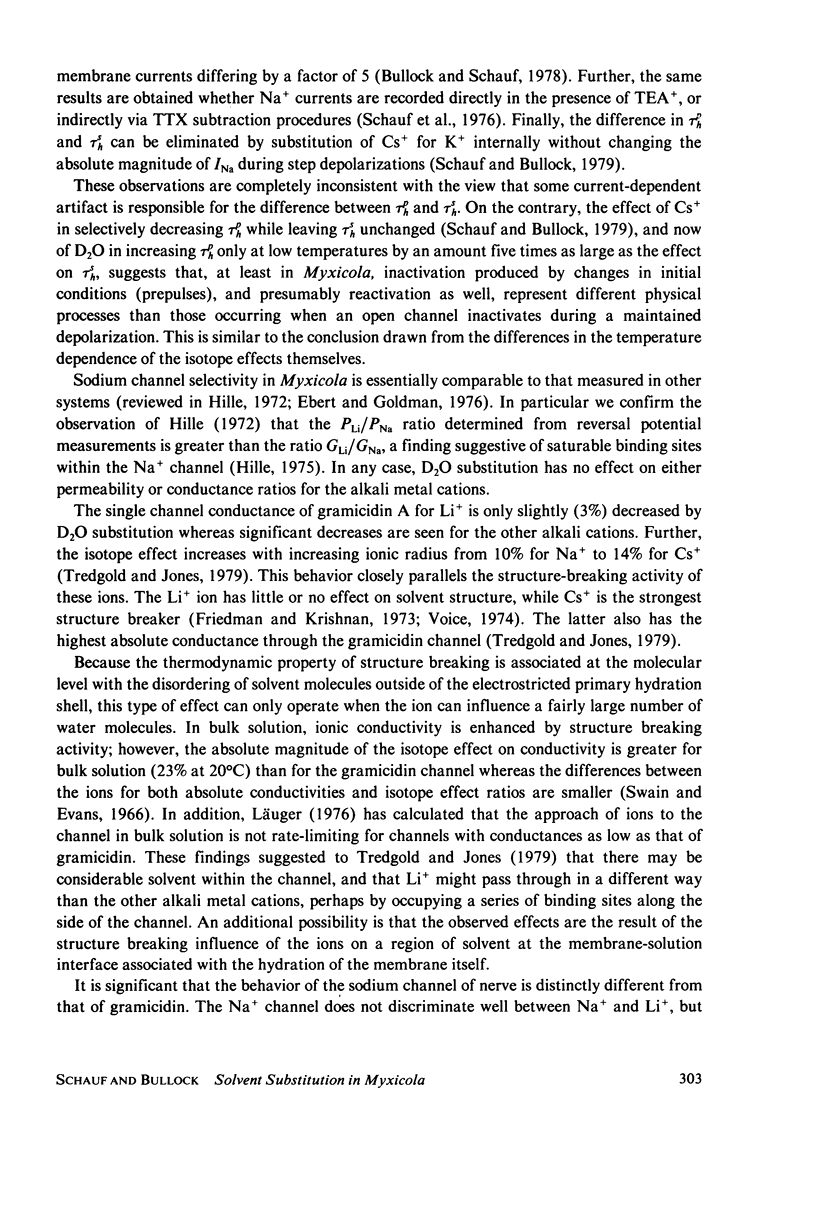
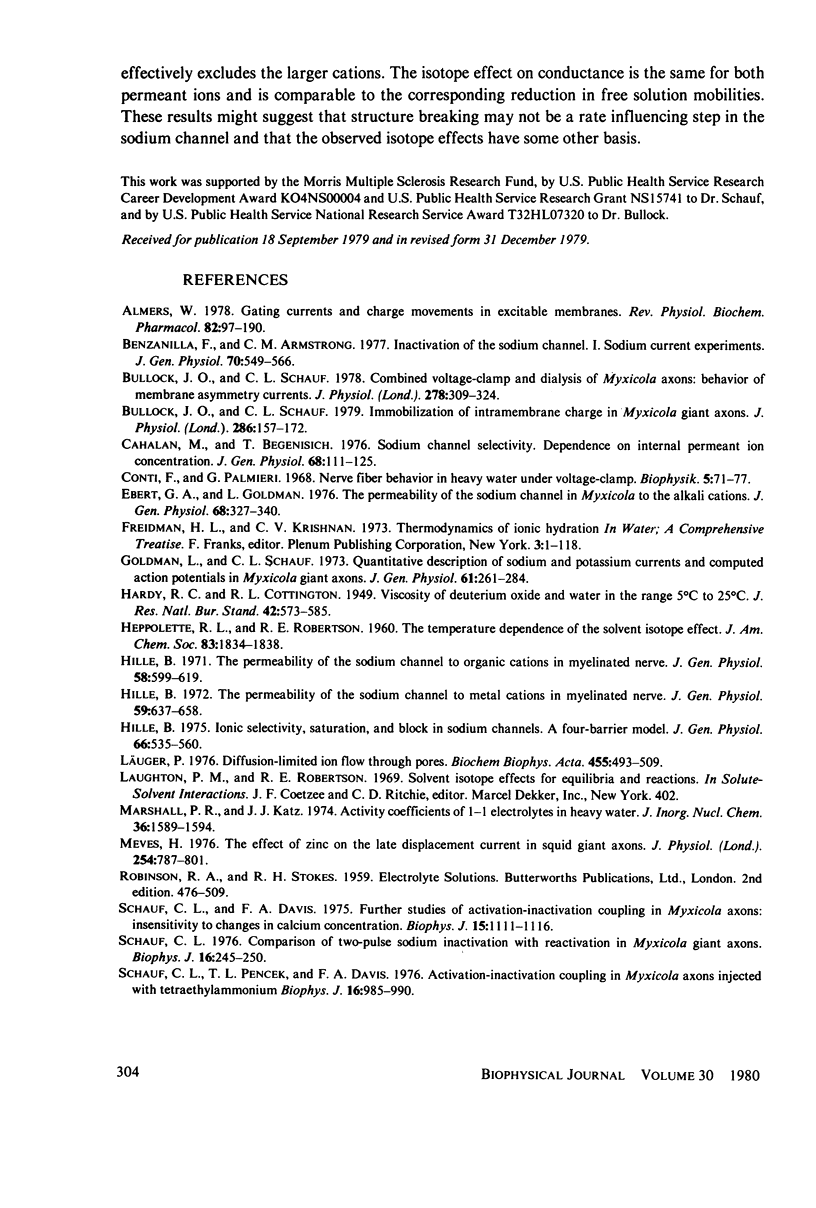
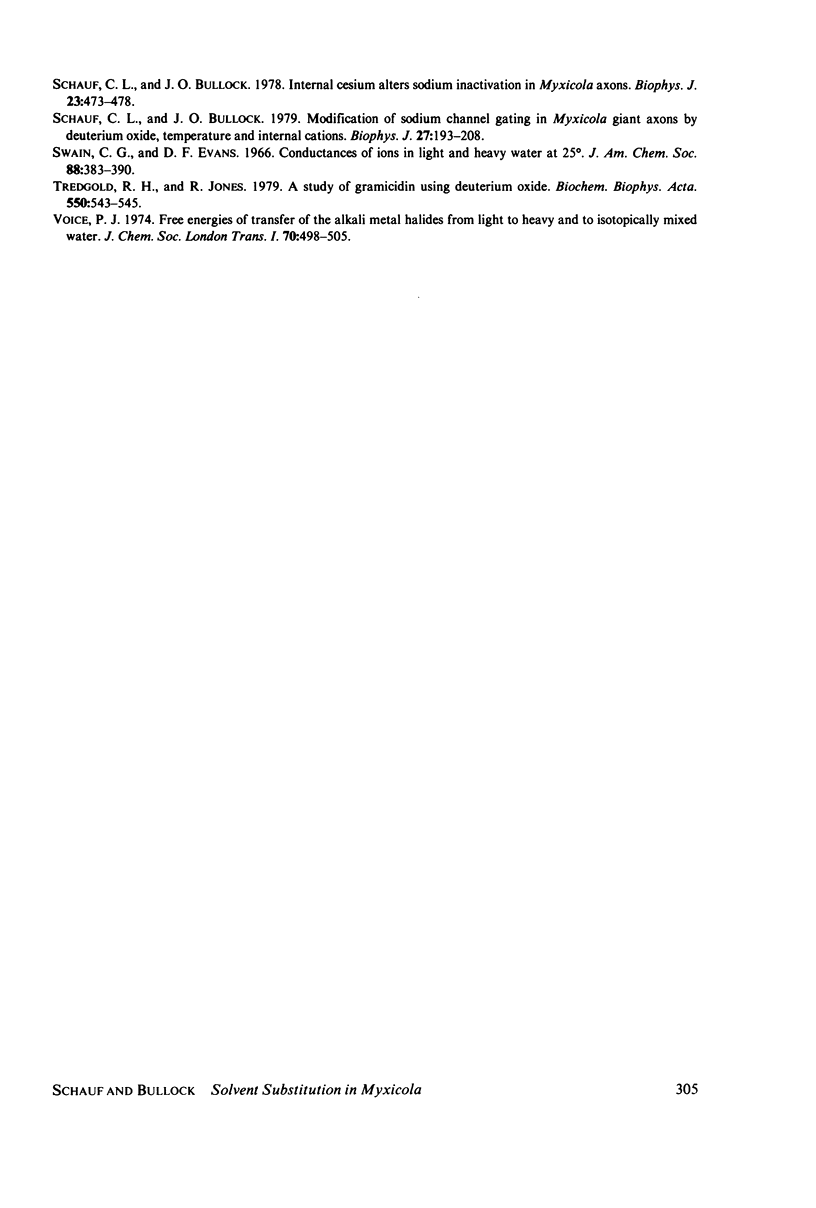
Selected References
These references are in PubMed. This may not be the complete list of references from this article.
- Almers W. Gating currents and charge movements in excitable membranes. Rev Physiol Biochem Pharmacol. 1978;82:96–190. doi: 10.1007/BFb0030498. [DOI] [PubMed] [Google Scholar]
- Bezanilla F., Armstrong C. M. Inactivation of the sodium channel. I. Sodium current experiments. J Gen Physiol. 1977 Nov;70(5):549–566. doi: 10.1085/jgp.70.5.549. [DOI] [PMC free article] [PubMed] [Google Scholar]
- Bullock J. O., Schauf C. L. Combined voltage-clamp and dialysis of Myxicola axons: behaviour of membrane asymmetry currents. J Physiol. 1978 May;278:309–324. doi: 10.1113/jphysiol.1978.sp012306. [DOI] [PMC free article] [PubMed] [Google Scholar]
- Bullock J. O., Schauf C. L. Immobilization of intramembrane charge in Myxicola giant axons. J Physiol. 1979 Jan;286:157–171. doi: 10.1113/jphysiol.1979.sp012611. [DOI] [PMC free article] [PubMed] [Google Scholar]
- Cahalan M., Begenisich T. Sodium channel selectivity. Dependence on internal permeant ion concentration. J Gen Physiol. 1976 Aug;68(2):111–125. doi: 10.1085/jgp.68.2.111. [DOI] [PMC free article] [PubMed] [Google Scholar]
- Conti F., Palmieri G. Nerve fiber behaviour in heavy water under voltage-clamp. Biophysik. 1968 Aug 12;5(1):71–77. doi: 10.1007/BF01388134. [DOI] [PubMed] [Google Scholar]
- Ebert G. A., Goldman L. The permeability of the sodium channel in Myxicola to the alkali cations. J Gen Physiol. 1976 Sep;68(3):327–340. doi: 10.1085/jgp.68.3.327. [DOI] [PMC free article] [PubMed] [Google Scholar]
- Hille B. Ionic selectivity, saturation, and block in sodium channels. A four-barrier model. J Gen Physiol. 1975 Nov;66(5):535–560. doi: 10.1085/jgp.66.5.535. [DOI] [PMC free article] [PubMed] [Google Scholar]
- Hille B. The permeability of the sodium channel to metal cations in myelinated nerve. J Gen Physiol. 1972 Jun;59(6):637–658. doi: 10.1085/jgp.59.6.637. [DOI] [PMC free article] [PubMed] [Google Scholar]
- Hille B. The permeability of the sodium channel to organic cations in myelinated nerve. J Gen Physiol. 1971 Dec;58(6):599–619. doi: 10.1085/jgp.58.6.599. [DOI] [PMC free article] [PubMed] [Google Scholar]
- Läuger P. Diffusion-limited ion flow through pores. Biochim Biophys Acta. 1976 Dec 2;455(2):493–509. doi: 10.1016/0005-2736(76)90320-5. [DOI] [PubMed] [Google Scholar]
- Meves H. The effect of zinc on the late displacement current in squid giant axons. J Physiol. 1976 Jan;254(3):787–801. doi: 10.1113/jphysiol.1976.sp011259. [DOI] [PMC free article] [PubMed] [Google Scholar]
- Schauf C. L., Bullock J. O. Internal cesium alters sodium inactivation in Myxicola. Biophys J. 1978 Sep;23(3):473–477. doi: 10.1016/S0006-3495(78)85463-0. [DOI] [PMC free article] [PubMed] [Google Scholar]
- Schauf C. L., Bullock J. O. Modifications of sodium channel gating in Myxicola giant axons by deuterium oxide, temperature, and internal cations. Biophys J. 1979 Aug;27(2):193–208. doi: 10.1016/S0006-3495(79)85211-X. [DOI] [PMC free article] [PubMed] [Google Scholar]
- Schauf C. L. Comparison of two-pulse sodium inactivation with reactivation in Myxicola giant axons. Biophys J. 1976 Mar;16(3):245–248. doi: 10.1016/S0006-3495(76)85684-6. [DOI] [PMC free article] [PubMed] [Google Scholar]
- Schauf C. L., Davis F. A. Further studies of activation-inactivation coupling in Myxicola axons. Insensitivity to changes in calcium concentration. Biophys J. 1975 Nov;15(11):1111–1116. doi: 10.1016/S0006-3495(75)85887-5. [DOI] [PMC free article] [PubMed] [Google Scholar]
- Schauf C. L., Pencek T. L., Davis F. A. Activation-inactivation coupling in Myxicola giant axons injected with tetraethylammonium. Biophys J. 1976 Sep;16(9):985–989. doi: 10.1016/S0006-3495(76)85749-9. [DOI] [PMC free article] [PubMed] [Google Scholar]
- Tredgold R. H., Jones R. A study of gramicidin using deuterium oxide. Biochim Biophys Acta. 1979 Feb 2;550(3):543–545. doi: 10.1016/0005-2736(79)90155-x. [DOI] [PubMed] [Google Scholar]


